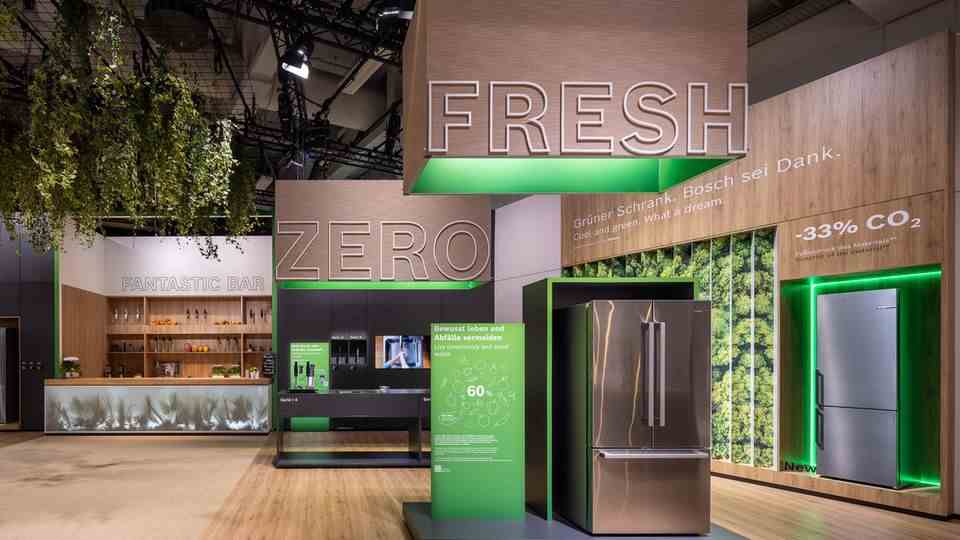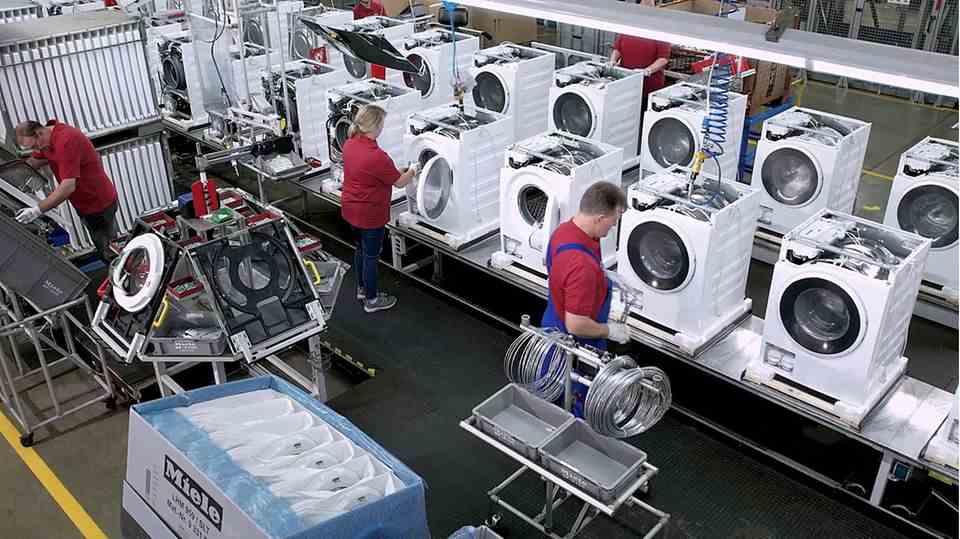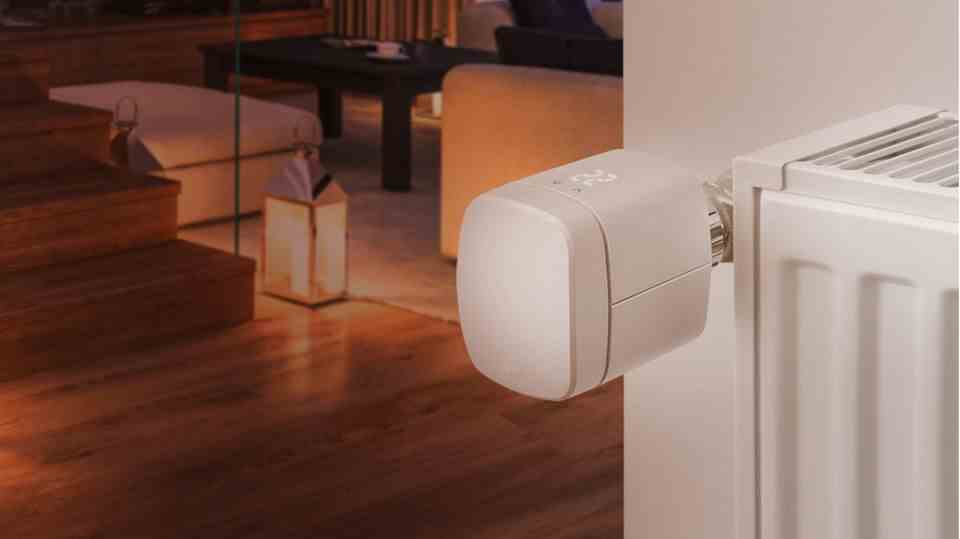Electricity prices are exploding, gas is becoming more expensive: energy prices in Germany are unstoppable. Experts from Miele, Bosch and Eve reveal how you can ensure lower costs in just a few simple steps star-Conversation.
Life at home is becoming more expensive – not only in winter, but in general. This is because the price of electricity is constantly increasing. Means: For consumers, every wash cycle, every dishwasher run and every cold beer from the home fridge becomes more expensive. Often in the cent range, but it adds up. At this year’s International Consumer Electronics Fair (IFA), the topic of energy saving and sustainability was at the top of the list for many companies, especially manufacturers of household appliances and hardware for an intelligent home.
Experts from Bosch, Miele and the smart home company Eve spoke to the star Tips were given on how consumers can save electricity within their own four walls. How can consumers use their devices in such a way that savings are immediately noticeable on the next bill? And when are simple tricks no longer sufficient, so that only a new washing machine or a new refrigerator can reduce power consumption?
This keeps your fridge cool
The experts from Miele and Bosch identified the refrigerator as perhaps the most important consumer in the household. Because this consumer is connected to the socket all year round without interruption and therefore has huge potential for savings or waste. Bosch expert Dr. Marko Blazekovic explains: “The refrigerator accounts for a full eleven percent of annual electricity consumption. The issue of energy efficiency is particularly important here.”

A high efficiency class means hard cash over the years. Bosch calculates that an A-device can save up to 844 euros in 15 years (at current electricity prices that are not even higher).
©Bosch
But how do you save when cooling drinks and food? “You can save if you fill the fridge properly. You can sometimes drastically increase the shelf life of food if you store it correctly – and store it visibly. If I chill things incorrectly or don’t see them, they end up in the trash. Also that costs money. It tends to make sense to think about the size of device you need in advance. If there is too much space, you fill it with drinks – this also stores cold. It is best to have things at room temperature – warm food or bottles out of the sun are harder to cool down,” explains Blazekovic.
He adds: “You should only open the fridge as often as absolutely necessary. Taking a quick look or opening it without a purpose costs money and usually does nothing. A window would be a solution, but it would be at the expense of insulation. So that’s actually out of the question. You just have to know what you want. That’s enough.”
Miele and Bosch agree on one point: if the refrigerator does not support no-frost technology, defrosting is the order of the day. Regularly. Christoph Wendker, VP Corporate Sustainability at Miele, explains: “Refrigerators without no-frost technology should urgently be defrosted regularly. Otherwise that costs hard cash. It is best to pay attention to this with new refrigerators. Speaking of old devices: what you should definitely not do should do: put 15 to 20-year-old devices in the basement after the exchange to have more storage space. The devices are often inefficient, expensive to operate and should not have a second life in the basement.”
When it’s time to start thinking about a new refrigerator, Wendker answers as follows: “Normally, the best way to go about it is to use the device for a very long time. This is the most sustainable and economical approach for household appliances. With refrigerators, we’re talking about 15 years , for the other large appliances from 18 to 20 years, for washing machines even more like 30 years from an environmental point of view. It is important to buy the most efficient appliances available at the time of purchase.” Bosch manager Blazekovic takes a similar view: “You can’t say in general when it’s time for new devices. After twelve to 15 years, I think it’s worth taking a look. What used to be class A ten years ago would be very low today on the scale. We’re talking about up to four times the consumption.”

It is particularly important to manufacturers such as Miele and Bosch to make production as environmentally friendly as possible. The customer does not notice this directly in their wallets, but it serves sustainability to a large extent.
©Bosch
When buying a new refrigerator, both manufacturers appeal to pay attention to the energy label, which has since been reformed. If you really want to save money for decades, you should look for a device with the A classification. And yes, it often costs more, but Christoph Wendker puts it into perspective: “Especially when it comes to cooling devices, it pays off if you buy them cheaply. The difference between the efficiency classes is relatively large – sometimes we’re talking about a fourfold difference in consumption between the best class A and the worst class G. In terms of service life, the more expensive appliance usually pays off. That costs money in development and production and of course has its price. But it’s worth it.”
Wash and rinse sparingly
Washing machines and dishwashers also have savings potential, but of course dryers too. And the good news is that you can probably save on the next run. Because little secret, but often criminally neglected, are the Eco programs of the many appliances, which Miele and Bosch strongly recommend. The only thing that costs is time. “The simplest tip is the Eco programs of the devices. It pays off immediately. The disadvantage is often smaller than you think. Because the Eco mode is not worse, it just takes a little longer. You replace energy-intensive heating up with mechanics – in other words you give the appliances time so that cleaning agents, for example, can take effect. That saves up to 50 percent electricity,” calculates Miele expert Wendker.
Another tip, which is only really useful for owners of newer devices, is to switch to the automatic dosing of cleaning agents. For years, Miele, Bosch and other manufacturers have been building devices that can be filled with large amounts of detergent or detergent and leave the correct dosage to the computer. This not only saves a lot of money when buying refills, they say, but is also significantly more environmentally friendly than an accidental overdose.

At Miele, many appliances are still manufactured in Germany. In terms of sustainability, the cheap device from China beats by far.
©Miele
Owners of older devices are advised to pay close attention to how much is actually needed when filling in the remedies. This can be solved with tabs or pods, for example, instead of loose powder and liquid detergent. However: This does not apply to half-loaded machines, the contents of which do not actually need the full dose.
Other tips for washing money and resources are now among the classics: don’t wash too hot, clean the fluff filter and (fortunately) don’t pre-rinse in the dishwasher. As long as the coarsest leftovers have gone from the plate to the bio bin, the machine manages the rest without any meticulous preparatory work.
The smarter, the cheaper (over time)
There is actually further savings potential in smart home equipment that takes on tasks that few people would think of regularly. That explains Lars Felber, PR director of the German smart home manufacturer Eve. At the IFA, the company demonstrated some exciting concepts of how money can be saved in the long term with just a few hundred euros. “The most obvious are of course smart thermostats,” explains Felber, “but smart shading with roller shutters or honeycomb blinds also save energy.”
How they do that is obvious. The smart devices, whether curtains or thermostats, measure the room temperature and/or the incidence of light on the window and react to it. On warm days, this prevents you from having to cool too much, on cold days it saves gas, oil or electricity because the heat stays in the house and dissipates more slowly.
And even if numerous manufacturers at the IFA assert that the devices do not have a dramatic consumption in standby, Felber pleads for smart sockets. He explains: “Many underestimate that the standby costs for devices are still an issue. A smart socket helps a lot. I can also use it to monitor my power consumption and find power guzzlers.”

Small device, big effect: A smart temperature controller (here from Eve) can save you money if you integrate it sensibly into your home.
© Eve
In contrast to the use of eco-programs or the correct loading of refrigerators, the effect of a smart home is not immediately felt in the wallet – the devices cost a lot of money, so it has to pay off first. Felber is confident: “With rising prices and gas tariffs, a thermostat pays for itself after just a few months.”
Felber has another tip for those who don’t like Smart Home and newcomers, almost fresh from the IFA: When purchasing new devices, you should make sure that the setup is as simple as possible. It can help to buy devices that support the universal “Matter” connection standard. This is a promise from the manufacturer that the devices can be easily combined with each other and that you don’t have to make your own rolls when it comes to integration into the smart home.



